Abstract
At the time of this writing, the site does not have the full content of the diploma. The final version of the dimlom will be available later.
Содержание
- Literary review of technologies for individual heating of residential and office buildings
- 1. Heating requirements for residential and office buildings
- 2. Rating of the best heating systems for houses and apartments
- 2.1. A heat pump is the best alternative for heating your home or office
- 2.2. Solid fuel boilers - a universal method of home heating
- 2.3. Gas boilers - simple, compact, efficient devices
- 2.4. Electric boilers - the simplest and most autonomous
- 2.5. Warm floor (electric-water) - effective novelty
- 2.6. Ceramic panels - a beautiful and mobile heating device
- 2.7. Electric convectors - extra warmth in the house
- 2.8. Infrared heaters - efficient and economical heating
- 2.9. Fan heaters are a quick way to heat a room
- 2.10. Heat storage heaters - an assistant in home economy
- Conclusion
- References
Literary review of individual heating technologies for residential and office buildings
1. Heating requirements for residential and office buildings
It should be noted right away that the heating project for the administrative building must be carried out by the relevant bureau. Experts assess the parameters of the future building and, in accordance with the requirements of regulatory documents, choose the optimal heat supply scheme.
Regardless of the selected types of building heating systems, strict requirements are imposed on them. They are based on ensuring the safety of the functioning of heat supply, as well as the efficiency of the system:
- Sanitary and hygienic :
- These include uniform temperature distribution in all rooms of the house. To do this, the heat for heating the building is pre-calculated.
- Construction :
- The operation of heating devices should not deteriorate due to the peculiarities of the structural elements of the building, both inside and outside it.
- Installation :
- When choosing technological schemes of the installation, it is recommended to choose unified units that can be quickly replaced with similar ones in case of failure.
- Operational :
- Maximum automation of heat supply. This is the primary task along with the thermal calculation of the building's heating.
In practice, they use proven design schemes, the choice of which depends on the type of heating. This is the determining factor for all subsequent stages of work on the arrangement of heating an administrative or residential building.
2. Rating of the best heating systems for houses and apartments
2.1. A heat pump is the best alternative for heating your home or office:
A heat pump helps to use the free thermal energy of water, soil, sun or air, converting them into useful heat for heating the room. During summer, the system can work in reverse, i.e. cool the air and provide a pleasant microclimate.
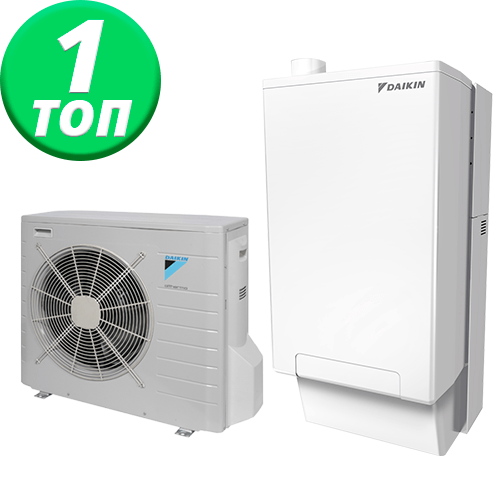
Figure 1 - Heat pump
Pros:
- Comfort;
- Low operating costs;
- Long service life.
Cons:
- Initial investment;
- Dependence on electricity.
Heat pumps are of the "ground-water" or "air-water" type, respectively, drawing energy from the ground or air. Air-water models are universal, their installation is cheaper and they can be placed near the house, on the roof, in apartments and offices. They know how to reuse the heat that leaves the room, taking advantage of the heat loss. In the event of a move, the system can be easily assembled and reinstalled at a new location.
But in winter they still lose their effectiveness, so it is advisable to have one more heat source in stock for this case. It is recommended to check the characteristics of the building so that the heat pump has sufficient power to heat the required area, but does not burden the user with unnecessary energy costs.
2.2. Solid fuel boilers - a universal method of home heating:
A solid fuel boiler is equipment made of cast iron or steel with a combustion chamber. The device operates on coal, briquettes, pellets (granules) or wood, providing heat to large areas.
Single-circuit boilers are convenient to use in commercial and industrial facilities, where industrial waste, paper, etc. can be used as fuel. Double-circuit devices can also be used for hot water supply at home.
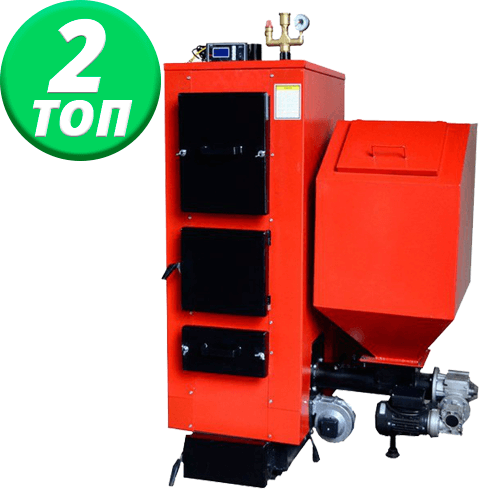
Figure 2 - Solid fuel boiler
Pros:
- Use of a renewable resource (firewood, pellets);
- Low operating costs.
Cons:
- It is necessary to constantly maintain and clean, monitor the quality of firewood;
- It is necessary to constantly check that there is fuel in the boiler (in the absence of a buffer tank or a large container for pallets);
- The need for a separate boiler room and a place for storing firewood.
Solid fuel boilers quickly pay off their cost, they can work without electricity and are used completely autonomously. And the cost of solid fuel is much lower than the price of gas.
2.3. Gas boilers - simple, compact, efficient appliances:
According to the method of installation, gas boilers are floor-standing or wall-mounted. The second option is more suitable for small apartments and private houses. Gas boilers for heating only are called single-circuit. Dual-circuit models can also provide the house with hot water. Gas boilers are very easy to operate, give off heat well and are able to heat even large rooms.
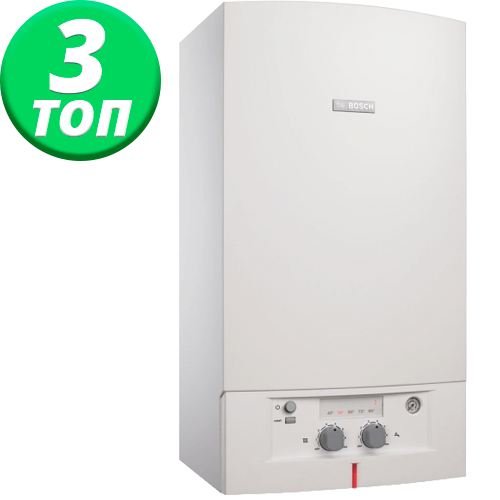
Figure 3 - Gas boiler
Pros:
- Comfort;
- Long service life.
Cons:
- Dependence on gas and its quality;
- High cost of gas connection;
- They are explosive.
Most domestic gas boilers require a coaxial chimney. In most new buildings, it is provided immediately, in other cases it will have to be done during the installation of the home boiler room itself.
The gas unit is the most convenient and profitable due to its high efficiency, simple installation and the ability to solve two problems in one fell swoop: with heat and hot water in the house.
2.4. Electric boilers are the simplest and most autonomous:
The difficulties with installing an electric boiler end with the need to ensure reliable wiring of the electrical network. Electric boilers are capable of operating autonomously, maintaining the desired microclimate in automatic mode. They are compact, efficient and completely safe.

Figure 4 - Electric boiler
Pros:
- Comfort - the boiler will independently maintain the set temperature and does not need any special maintenance.
- Easy to connect - no special ventilation, chimney or separate room is required for installation.
- The machine takes up little space and you just need to plug it in to get started.
Cons:
- Dependence on electricity. No power, no heat;
- High operating costs;
- Heating costs are directly dependent on electricity tariffs;
- Heavy load on the power grid, you will have to take care of high-quality wiring.
An electric boiler can easily provide heat to a home, office, or warehouse of any size. It is safe for the environment, does not emit odors and waste, and takes up very little space. With the help of a two-circuit model, it will be possible to solve the issue of hot heating at the same time.
2.5. Warm floor (electric-water) - effective novelty:
Users know a lot about electric floors, so this type of heating is in fifth place in the rating. But in terms of convenience, efficiency, safety and durability, it is ahead of all other heat transfer systems, and therefore has every chance to move to the first lines of the TOP of the best heating systems.
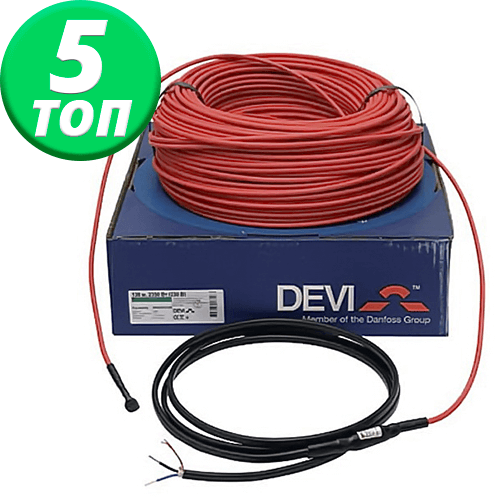
Figure 5 - Warm floor
Pros:
- Comfortable to use - just turn it on, and the floor quickly heats the room to the desired temperature.
- Electric underfloor heating is easy to install: fewer complex components in the structure.
Cons:
- For water, you need a concrete screed, while an electric one can also be mounted on glue under a tile.
- You can put it in a regular apartment, but there will be an increased load on the network, the screed will add extra weight and height to the floor.
The water-electric floor fits perfectly into the project of a private house. It combines comparative ease of installation with economical operation. The latter is easy to measure in light bills. Electric underfloor heating differs in that there is no need for a manifold unit, a pump. The rest of the installation is very similar to the installation of a water floor heating.
2.6. Ceramic panels are a beautiful and mobile heating device:
Ceramic panels are capable of heating a home or office by themselves, or used as an additional source of heat. You can see the best models in the "Rating of the best ceramic panels for home heating".

Figure 6 - Ceramic panels
Pros:
- Easy to operate: a thermostat and two buttons for turning on the heating element and the IR panel, as well as the ability to put the device at full and half power. works on the "plug-and-warm" principle.
- Saving energy in comparison with other household appliances. The efficiency of ceramic panels is the highest compared to other heating options.
- Does not dry the air, because the heating element does not directly contact oxygen.
Cons:
- Often a fragile and heavy structure, which is better to immediately mount on the wall and not move around the dwelling.
- Large dimensions when compared with similar models of other household appliances in terms of heating power.
The main feature of ceramic heaters is the combination of three heating principles: heat that comes from a hot stone (the effect of a "Russian stove"), natural convection and soft infrared radiation that envelopes nearby objects with warmth.
The design of the front side is matched to any interior. And in terms of economy, the heating element hidden in a ceramic casing is unmatched: it remains warm for a long time after disconnecting from the network.
2.7. Electric convectors - additional heat in the house:
Electric convectors are mobile, extremely understandable in operation and inexpensive, therefore they deserve widespread use. They can be mounted on a wall or on legs and carried to any corner of the room.

Figure 7 - Electric convector
Pros:
- Cost. The price of electric convectors is the most affordable compared to other heating devices.
- Easy to operate. It is enough to plug the heater into an outlet and it is already working.
- Fast space heating. In half an hour, the heater will bring the room temperature to a comfortable level.
- Security. The devices are protected from dripping onto the heating element, which makes it possible to install convectors even in bathrooms. Many models are also protected against tipping over.
- Savings. Convectors with a motion sensor will automatically turn off if the room is empty.
Cons:
- Power consumption;
- Dry the air;
- If you do not cling to the wall, in the summer you will have to stumble over the convector and look for a place for it on the balcony or in the closet.
Convectors are good because they can be moved around the house as you like. They efficiently convert the used electricity into heat. Modern models, in addition to a neat appearance and a variety of design of the front panel, are also distinguished by the rounded corners, which makes it possible to place the devices in children's rooms.
2.8. Infrared heaters - efficient and economical heating:
It implies the use of extremely long (approximately 10 microns) waves that are safe for health and do not leave burns on contact with the skin. The thermal energy that the device gives off is similar to the rays of the sun - immediately heats objects, which then give up their heat to the air.
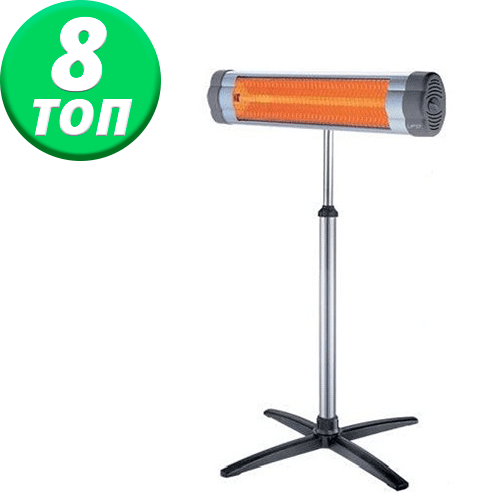
Figure 8 - Infrared heater
Pros:
- Heats objects, not air (effective when it is impossible to heat the room with air heating).
- Does not dry out the air;
- They are energy efficient;
- They quickly warm up the room to the desired temperature;
- Easy to install and very mobile;
- Fireproof.
Cons:
- Power consumption;
IR heaters are varied in size and installation method, therefore, it is easy to choose the most effective model for each specific case. A reflector or infrared heater is also suitable for outdoor installation, for example, to provide warmth in the evening in a gazebo or on a terrace. The models available on the market differ in technical parameters, but they are all inexpensive, high quality and economical.
2.9. Fan heaters are a quick way to heat a room:
Small fan heaters are useful for additional room heating. They are inexpensive, they quickly warm up the room by distributing air in four directions. Industrial models for heating workshops, sports complexes, greenhouses are even more popular. supermarkets. These devices are also suitable for intensive drying of walls during renovation or construction.
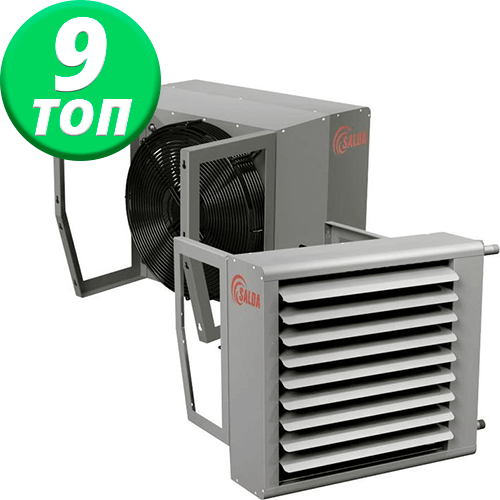
Figure 9 - Fan Heater
Pros:
- Able to heat large premises;
- Water heaters can improve the energy efficiency of a heating system.
Cons:
- The air is constantly blowing, this noise can sometimes be annoying;
- High energy consumption in electric fan heaters;
- Over time, dust may accumulate on the front grilles and spread throughout the room when turned on.
Fan heaters must be equipped with a thermostat and overheating protection, which ensures high fire safety. Water heaters are indispensable in warehouses, car washes - wherever a powerful source of heat is needed. They are distinguished from conventional heaters by their greater efficiency and lower noise level. Best for production needs.
2.10. Heat storage heaters - an assistant in home economy:
Do you have a two-zone meter that counts electricity consumption separately for day and night? If yes, then a heat storage heater is suitable for you, which stores energy at night and uses it to heat the room during the day.
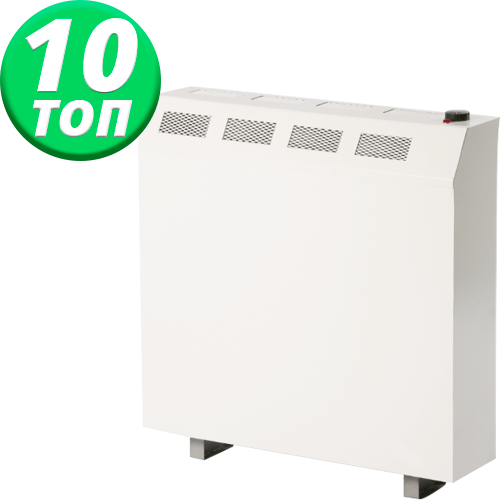
Figure 10 - Heat storage heater
Pros:
- High energy efficiency. The heat-absorbing core made of magnesia blocks accumulates heat at night or during a special tariff. So that it is not wasted, excellent thermal insulation is provided.
- Provide comfort: they warm well, do not make noise and do not burn oxygen. Therefore, in a room with a working heat storage heater, there will be no headache.
Cons:
- Dimensions and weight.
Heat storage heaters are a double way of saving: due to high efficiency and the use of night tariffs. Although the device is more expensive than heaters of similar power, it will quickly pay off on the farm. The best solution in the situation of constantly growing electricity tariffs.
